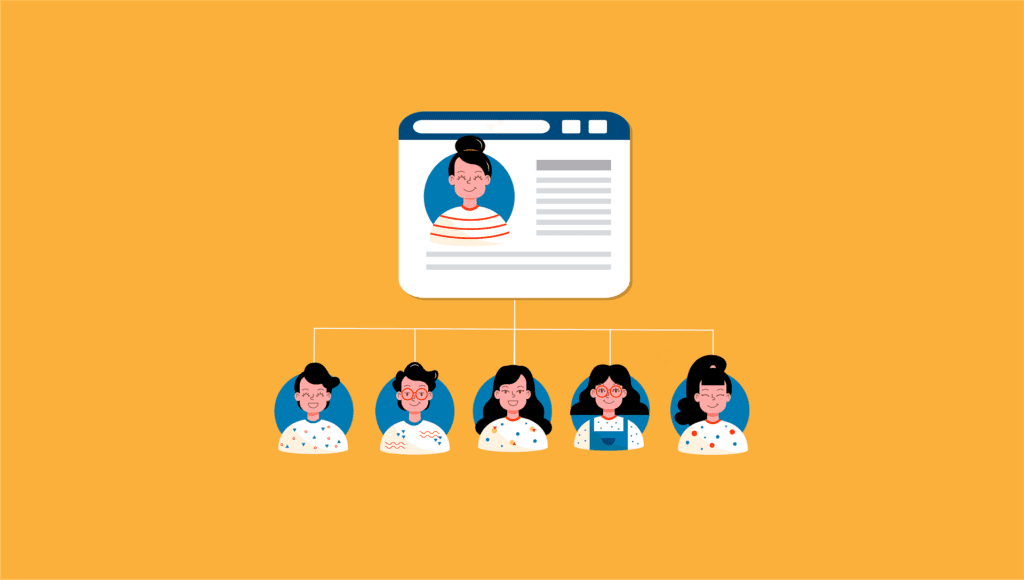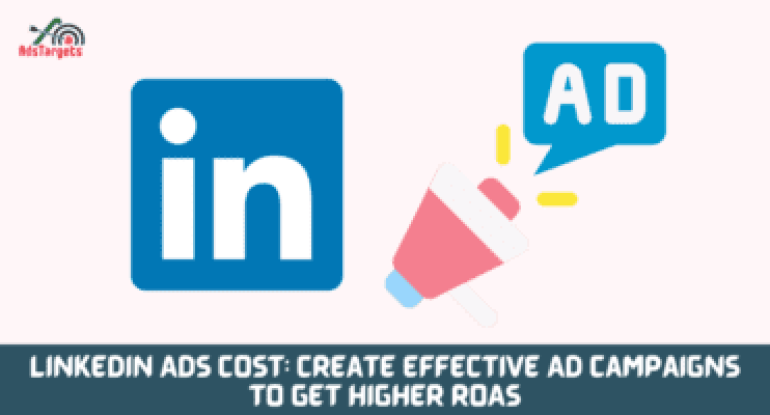It is not a secret that LinkedIn advertising has a reputation for being expensive and very far from being considered cheap compared to other social media marketing platforms.
Most B2B clients ask this question. “Why is LinkedIn advertising so expensive?” or “LinkedIn Ads cost so high?” Well, I am of the firm opinion that the pricey cost tags pegged to ad slots on LinkedIn are a reflection of how effective the platform is.
It should also be a result of how much they invest in their algorithms to deliver high-quality leads that can result in massive conversions for advertisers.
Other factors that should explain the high cost of adverting on LinkedIn should include firstly, that it’s not a traditional media channel like Google Ads or Bing.
LinkedIn is a unique network where members are looking to do business with each other. Mutual relationships play a key role in the LinkedIn ecosystem.
This dynamic makes it different from other online marketing platforms.
On top of that, more than 830 million professionals actively engage on LinkedIn worldwide. This makes it one of the most profitable business networks in the world.
For these reasons, it is exceedingly crucial to conduct your ad campaign on LinkedIn in the right way to achieve your goals while making the most out of your budget.
Yes, it’s sad that LinkedIn is costing more money, however, from my point of view, the value of using LinkedIn as a business tool is still greater than the subscription costs.
However, every savvy business owner understands that finding the right customer on LinkedIn is less about dangling a hook randomly in dark waters; it is more about finding the right spot and casting a net to drag out big catches.
In this article, we will take out quality time to explain to you how the LinkedIn ad works and why it demands the amount of money you commit to the platform.
Table of Contents
ToggleHow much does it cost to advertise on LinkedIn in 2022?
Before you invest resources in the platform, ask yourself if a career-minded professional would have an interest in your product or services. If a resounding “yes,” is your answer, then LinkedIn likely provides a good atmosphere for your business to flourish and blossom
LinkedIn allows you to customize the amount you are comfortable spending and bid on ads. This means that LinkedIn Ads costs are of different amounts depending on what the advertiser wants. Typically, advertisers on LinkedIn pay a regular price of $5.26 for every click.
LinkedIn demands a minimum bid of $2 for CPC and cost-per-impression campaigns. This cumulates into averages of $5.26 for the clicks and $6.59 for every 1000 impressions your LinkedIn ads generate.
In all of these, Sponsored InMail has the most expensive option, with an average of about $0.80 for each send in the campaign.
More than we have said already, your real LinkedIn Ads cost will depend on the following factors.
#1. Your Target Audience
To cut through the noise in the social media space, you need to narrow and define the path for your ad campaign to a well-defined group of people.
If your goal is to go after a high-demand audience, you will pay more for your campaign. There are two reasons for this: the audience’s perceived value, and also the number of competitors who are on the lookout for the attention of the same audience.
In the world of marketing, every single day, more companies, with more brands and more products are queuing to advertise, which means there is more demand for consumer attention than ever before.
So a particular audience with more attention from advertisers will attract more cost from the system billing point.
#2. Your Bid Amount
Of course, the amount of your bid also impacts your LinkedIn Ads cost. Though you will not have to pay higher than your bid amount, you will pay some percentage of it.
This is because LinkedIn’s advertising auctions require the winner to pay one cent more than the runner-up bid.
#3. Ad Relevance Scores
The relevance score is determined based on the positive or negative feedback we expect an ad to get from its target audience.
The more positive interactions we receive, the lower the ad cost on our purse. The relevance of your ad plays a crucial role in your LinkedIn Ads cost.
If you achieve a high score regarding relevance, your expenses will decrease. This occurs because LinkedIn actively wants to offer engaging ad content to its users.
Budget and Bidding Options
Advertisers have three options to choose from and stay in charge of their LinkedIn advertising, these include:
#1. Total Budget: You set a total budget for the complete ad campaign. This works best for those who want to swiftly deliver a campaign for a set amount of money. The lowest you can spend is $10 per campaign.
#2. Daily Budget: Here the minimum amount you set for a campaign is $10, the daily budget fits those who want to design a campaign that runs on a nonstop basis.
#3. Setting Bids: As stated above, setting a bid means that you have the option to indicate the maximum amount you will pay for impressions, clicks, or sends.
This means that you will never pay more than your bid. LinkedIn has set a benchmark of $2 minimum for every click.
With LinkedIn you have a pool of options through the bidding process, done with picking budgeting options, the next pool has three bidding options to pick from for your LinkedIn ads.
#1. The first option is cost-per-click (CPC): This means that you pay only when users engage with your ad through a click.
This bid option is suitable when you want to drive traffic to a website or generate qualified leads.
#2. Cost-per-impression (CPM): This is the second bidding option where you spend money each time your ad generates 1000 impressions.
An impression means that someone has seen your ad, but is not necessarily engaged with it. This bidding option is useful when the ad objective is to increase brand awareness.
#3. Cost-per-send (CPS): This applies only to those engaged with Sponsored InMail. When you bid CPS, you set the maximum price you will spend for every user that receives your Sponsored InMail advertisement.
Since this sends advertising messages directly into a user’s mailbox, it is most suitable for companies that wish to target specific users with a product or service.
How Does LinkedIn Advertising Work?
Like other social media advertising channels, LinkedIn advertising offers you different ad types and formats to play with.
And, like other channels, you should be choosing your ad format based on the overall objective you want to drive.
Across all their offerings, LinkedIn advertising supports brand awareness, engagement, site conversions, website visits, lead generation, video views, and job applications.
Though LinkedIn advertisements do not appear as obvious as ads through other platforms, an engaged user will encounter them daily.
As typical with online advertising, LinkedIn Ads cost has varying amounts and exists in different forms. If you decide to advertise on this platform, you can choose between Sponsored Content, Text Ads Sponsored InMail and Dynamic Ads.
Sponsored Content
Sponsored content ads blend smoothly with the LinkedIn platform. These are the ads that appear to be “sponsored” posts from a company’s feed.
Your ads manager can create a normal post with a headline, image, and link to the sponsor. Or you can create carousel ads, lead generation ads, and video ads that appear in the same “sponsored” format.
Text ads
If you frequently flip through your LinkedIn feed, you have likely seen those tiny ads that appear at the top of your feed. Or at the right side panel. These are the so-called text ads, and they are normally the cheapest LinkedIn ad format.
LinkedIn text ads are the nearest in functions to Google or Bing search ads that you can get on the platform.
LinkedIn text ads operate on a familiar pay-per-click (PPC) or impression basis, and they are featured in the sidebar.
Now, I won`t go into too much detail in this article about LinkedIn text ads, so we can focus on our key subject. For more on text ads, you can read our previous article.

Sponsored InMail
Do you remember that small box that appears on your computer screen when you log into LinkedIn that is packed with new messages and locked waiting for you to open? Some of those are likely advertisers popping into your inbox through Sponsored InMail for a small fortune.
Advertisers or sales teams can curate a list of contacts to send customized messages. The content of the messages is largely up to you, you want to invite potential customers to events or even attempt to generate an inbound call.
Dynamic ads
Dynamic ads are as customized as you can get with your LinkedIn advertising. Advertisers can decide to promote job postings, content downloads, their company page, or drive traffic to a website via spotlight ads, which also appear on the newsfeed.
Dynamic ads appear on a LinkedIn member’s profile data, including company name, profile data, photo, job title, and more.
Thanks to automation, you can launch dynamic campaigns swiftly with individually populated ads across the LinkedIn desktop.
These ad types are ideal for a few types of objectives, including:
#1. Customizing the experience for your audience members.
#2. Automated individual campaign at scale
#3. Customizable ads for a defined market objective you are looking to capture.
LinkedIn Advertising Audience Targeting Options
To put your advertising message in front of the right eyeballs, you need to target a suitable audience with your LinkedIn advertising, this goes a long way in curtailing wastage on ad spending and puts your LinkedIn ads cost within a reasonable circle.
Choose from the audience targeting options below.
#1. Matched Audiences
Matched Audiences allow advertisers to create custom audience segments they can include in their campaign targeting selections.
To begin, place a tag on your website to be able to retarget members who visited your LinkedIn page, just as you would set up for Google or Facebook.
This tag is known as an “Insight Tag” and it can be used to create lookalike audiences. In addition to targeting your website visitors, you can also upload or merge email lists and run account-based targeting through LinkedIn.
LinkedIn advertising features an audience option that helps you build a viable campaign audience that expands your reach through its network of publishers. So you don’t have to worry about not having enough website visitors or sales prospects.
Aside from the main Insight Tag, you can also include conversion tracking on your LinkedIn advertising campaigns. These prompts are great to track distinctive purchases or other actions on your site, especially if you do not use a marketing automation system to create distinctive landing pages and forms.
#2. Audience Attribute
LinkedIn ads come with comprehensive options for targeting; this means that you can make sure your ads are being served to the right people.
To set up your LinkedIn ad targeting, begin with the basics: language and location. You can choose a permanent geo-location as specified in user profiles.
Once you have determined the language and location, you can narrow down your audience based on these targeting options available.

Company
Targeting by a company is especially useful if your sales team has specified verticals. An added benefit is that LinkedIn advertising offers the best targeting by company option compared to other social advertising platforms because members are far more likely to keep their employment information up-to-date.
If targeting a specific company is not right for your strategy, you can still use this targeting option to shrink your audience.
Company connections: LinkedIn allows you to target first-degree connections of chosen companies if they have over 500 employees.
Company followers: This selection allows you to reach your company page followers.
Company Industries: The primary industry of the company is where the member is an employee, as stated by the company. Additional industries may be inferred about the company and incorporated for targeting. You can reach members employed in those industries.
Company Names: You can reach employees based on the company name listed on their profiles. These are based on LinkedIn Pages, which are kept by company employees.
Company Size: This allows you to reach members based on the size of the organization where they are employed. Company size is checked by the number of employees listed on the organization’s LinkedIn Page.
Company Revenue: This allows you to target companies by their estimated yearly revenue.
Demographic
This is much simpler: Include members of your audience that are of a certain age or gender, as found on their profiles.
Education
LinkedIn Ads lets you reach members based on their levels of education, fields of study, and the institution they attended.
Job experience
LinkedIn allows you to target an audience based on their job. Note that building an audience based on jobs is done best on LinkedIn.
Functions or skills: You can build an audience composed of roles in their job positions or skills listed in their profiles. The skills can also be obtained from endorsements from connections.
Seniorities, titles, or experience: Reach LinkedIn members with a certain level of seniority, years of experience, or a job title listed on their page.
Interests
Recently LinkedIn introduced interest-based targeting. Now, you can include users who have joined groups around certain interests like brand marketing or digital advertising and people with interests that match your business.
If you target certain job titles, companies of a specific size, and followers of your company page, remember that LinkedIn creates the audience based on an “AND” statement, which can easily cut down your audience to an unrealistic size.
But hey! Don’t worry; you can also decide to exclude certain criteria as well.
I recommend selecting one grouping to focus on. Create an audience that targets by job function and a different one targeting groups.
Then you can easily measure how your ads resonate and modify bidding accordingly. LinkedIn Ads do not have you compete against yourself, so if there is an overlap between a member who exists in more than one of your audiences, you won’t have to pay double to reach them.
Depending on how big your audience is and the type of ads you run, LinkedIn generally recommends a certain level of congestion in your advertising approach.
The higher the impression rate, the more likely a potential customer is to click on your ad.
Notes: When using these targeting options, be mindful that LinkedIn tools may not be used to discriminate based on protected personal characteristics like gender, age, or actual or perceived race or ethnicity. If an ad is flagged as discriminatory it will be immediately pulled from the platform.
If your targeting selections seriously limit your reach, you will be notified with an Audience Too Narrow message which forbids you from saving your targeting and moving to the next step.
The only way out of this is to increase your audience size to save your changes.
Conclusion
Although I don’t work for LinkedIn and cannot comment on ads coting, I believe that a decision to pay for a service needs to be based on multiple factors:
#1. The cost of developing and maintaining the service being provided
#2. The value expected to be derived from the subscription
#3. The time saved by utilizing the service
Interestingly, ad returns on this platform beat the LinkedIn ads costs by miles providing value back to the advertisers, which in my mind, implies a fair exchange.









